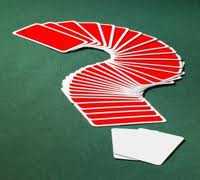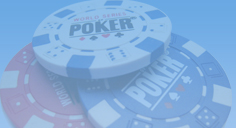Reading the Board - Paying Attention
Good poker players are good at reading the board and are always aware of which cards potentially present danger. Many new players play oblivious to what their opponents starting hand ranges might be and as such, don't pay much attention to the board other than to work out what they hold and what they could make. As a result, they are more likely to walk into situations which ultimately cost them money.
I think there will be a time when most player have at some time or another committed chips to a pot thinking they have a winning hand,  only to miss that the board give an opponent a stronger hand. As relevant as it is to know what you are holding and what hands could be made, it is key to know what hands are not possible so as not to worry defending against them. Here are some simple guidelines to get you started.
only to miss that the board give an opponent a stronger hand. As relevant as it is to know what you are holding and what hands could be made, it is key to know what hands are not possible so as not to worry defending against them. Here are some simple guidelines to get you started.
Keeping things simple, understanding how strong your hand is, against what is possible (given the board), should influence how aggressive you are and ultimately how you bet. Remember the aim is to minimize risk whilst maximising potential reward - to do this you need to be able to weigh up what the risks are. It is imperative that you can quickly size up the board.
If the board pairs (also board cards or community cards), someone may have a Four of a Kind. If there are no pairs on the board, Four of a Kind can't be made. A pair on the board also opens up Full House possibilities. Both of these hands are very strong, so when the board pairs, pay attention, as someone may be holding a monster. It can be very easy to overlook these hands when you also have a strong hand.
Three of the same suit and a flush is now possible so be careful, particularly where you hold a straight. Often when the suited community cards are raggy, it's really easy to ignore the danger cards that are in front of you. As the value of the cards doesn't matter when making a flush (unless more than one person holds a flush), it can be easy to overlook.
There is far less risk playing A ![]() K
K ![]() than there is playing 4
than there is playing 4 ![]() 8
8 ![]() . Even if you hit your flush with the 4-8, you might still be behind against a 9 high flush or better. In time i think we all come to appreciate the risks associated with our creativity. As a simple rule, if you play suited cards and you make your flush, you should be prepared to lay it down in the face of serious aggression - especially where there are hands that have you beat.
. Even if you hit your flush with the 4-8, you might still be behind against a 9 high flush or better. In time i think we all come to appreciate the risks associated with our creativity. As a simple rule, if you play suited cards and you make your flush, you should be prepared to lay it down in the face of serious aggression - especially where there are hands that have you beat.
You should also watch out for cards in sequence - for instance, the board comes 4-5-6 or 4-5-7 or 4-5-8, there is the possibility that an opponent has a straight. If the cards on the board only have two 'holes' or missing cards in a string of five consecutive cards, someone may be holding those cards. This is even more likely where you have a multi-way pot and there have been limpers. There may well be a few players with raggy cards, possibly connectors or suited connectors.
At the same time, when cards like 9-J-Q show themselves on the board, beware that an opponent may be holding the 'missing' 10-K or possibly the 8-10, both very playable hands. If there are two cards of the same suit, there may well be flush draws lurking. Any third card of the same suit should be a red flag to slow down (unless you hold it).
An A-8 on a 4-5-8 board is pretty strong but you don't want to bust on a pair. Play aggressively however when you think you are behind, fold and move onto a better spot. Information is power so be sure to use all the information you have on a player, before making a decision. For instance, you might know their starting hand range, which might tell you a certain player is less likely to have connected. If you know that they only play face cards and premium hands, a low board is a lower risk to someone that plays any two cards. Maximize your chances of winning. Reduce your risk. There is no need to put all your eggs in one basket, particularly in a lengthy session.
Red Flags on the Board
Is there a pair on the board?
Yes. Both a Four-of-a-Kind and a Full House are possible.
Are there three suited cards on the board?
No. A Flush is not possible.
Are there three Sequence Cards on the board?
Yes. A straight is possible.
Can you use your cards to rule out possible
hands?
Yes. Since if you have one of the K's, no one can have Four-of-a-Kind this hand and so on.
The cards that can make your opponent a possible winner are known as danger cards (or scare cards) and being able to recognize them can keep you out of trouble. Having the best hand on the flop or pre flop, does not mean that l have it on the turn or river. It is usually less costly to make a bad lay down than a bad call.



Popular Top-Lists
Recommended Visit













 Top UK Poker Options
Top UK Poker Options